
Your weekly guide to Sustainable Investment
TBLI Capital Connect
Your Gateway to Mission-Aligned Investors
Why TBLI Capital Connect?
✅ Access to a curated network of high-net-worth investors and venture capitalists
✅ Tailored matchmaking to align you with the right funding partners
✅ Streamlined process to fast-track your fundraising goals
✅ Different tiers of service, offering you the most suitable service according to your budget.
More details here
Would you like to book a call to discuss in detail? click here
Upcoming TBLI Virtual Mixers

Join the TBLI Virtual Mixer every last friday of the month at 16:00 CET.
Connect with mission-driven investors, entrepreneurs, and changemakers creating real value.
This isn’t just another virtual event. It’s where the right people come together to create lasting change.
Will you be in the room?
🔹 Spots are limited—secure yours now.
TBLI Radical Truth Podcast
How to make your investments Impactful? /w Audrey Selian
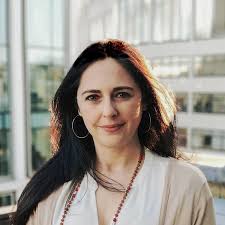
Audrey Selian serves as Director of Artha Impact (Rianta Capital Zurich), a dedicated advisory to the Singh Family Trust and is co-founder of Artha Networks Inc. (ANI), a SaaS platform that has been licensed to various ecosystem-building organizations working to support investment discovery and collaboration across various sectors and geographies.
Audrey’s focus within the Artha portfolio has been on the deployment of private capital to high impact businesses serving the underserved in India in the agri, health and education sectors, among others.Audrey has served as an advisor to Halloran, is co-founder of ImpactforBreakfast.com, a network of over 3,500+ people across 33+ cities, and is also co-founder of Impact Hub Yerevan in Armenia and of Baraka Impact (an emerging market focused health-focused investment platform).
Audrey holds degrees from the Fletcher School at Tufts University (PhD, MALD), the L.S.E. (MSc) and Wellesley College (BA). In 2003-4 she was a doctoral fellow at Harvard in 2004-5. In 2022, she co-edited a book called “The Business of Building a Better World" with Prof. David Cooperrider from Case Western Reserve, published by Berrett Koehler Publishers in 2022.
Three things people will learn from this podcast:
- What not to do in the impact finance sector
- How to find the good people who get s*** done
- How to avoid the posers and the imposters
Join TBLI Circle and expand your Impact network
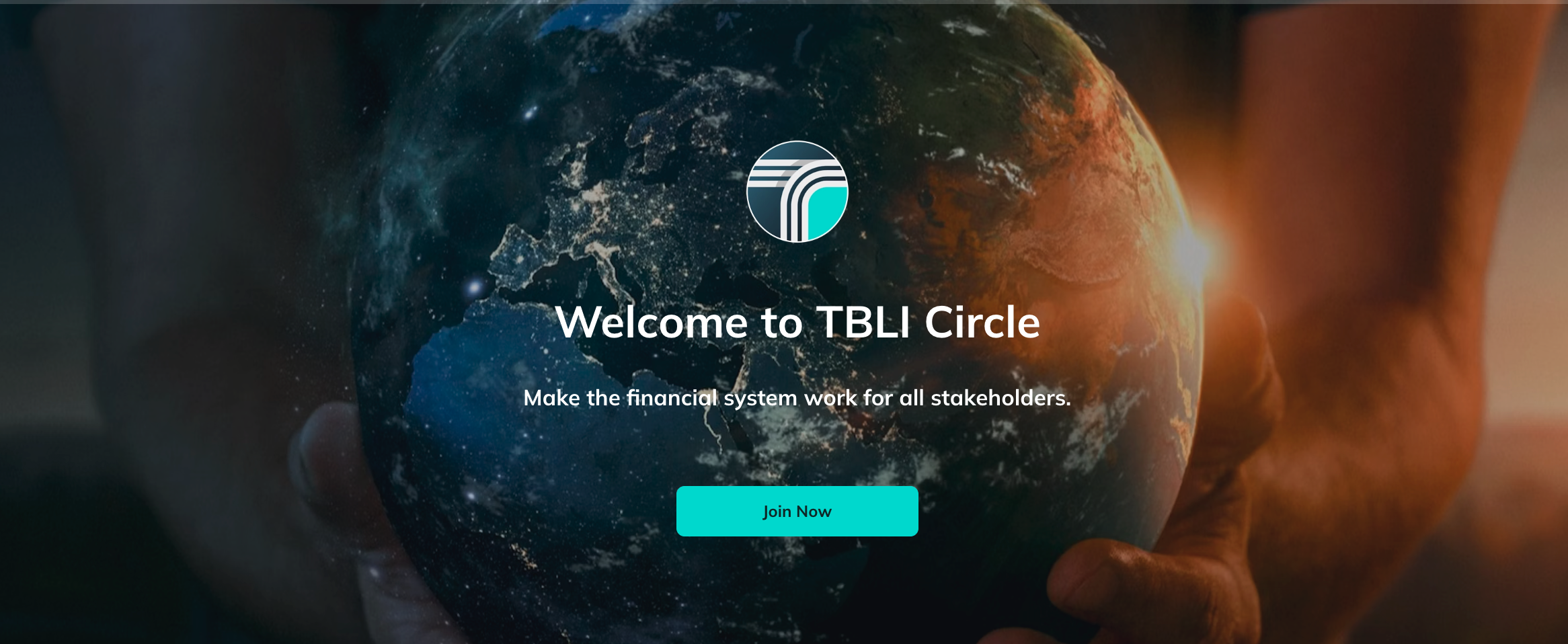
Step into a community of purpose-driven professionals transforming finance for a sustainable future. At TBLI Circle, you’ll connect with authentic leaders, discover breakthrough opportunities, and gain insights that drive real impact. Expand your network, elevate your influence, and accelerate your journey in ESG and impact investing. Don’t just talk about change—be the change.
Expand your network, elevate your influence, and accelerate your journey in ESG and impact investing. Don’t just talk about change—be the change.
INSIDEOUT Summit
Where purpose meets innovation! An experience for It’s an experience designed for 180+ purpose-driven innovators exploring how tech and human potential can shape a better future
May 9th, 2025
Impact Hub, Vienna
More info
Climate crisis has tripled length of deadly ocean heatwaves, study finds
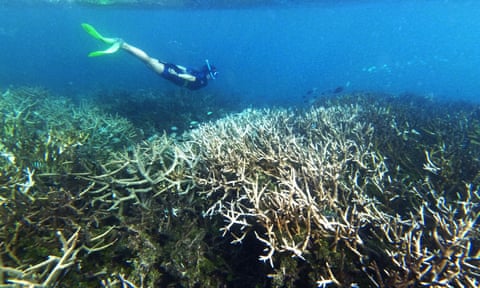
Hotter seas supercharge storms and destroy critical ecosystems such as kelp forests and coral reefs
The climate crisis has tripled the length of ocean heatwaves, a study has found, supercharging deadly storms and destroying critical ecosystems such as kelp forests and coral reefs.
Half of the marine heatwaves since 2000 would not have happened without global heating, which is caused by burning fossil fuels. The heatwaves have not only become more frequent but also more intense: 1C warmer on average, but much hotter in some places, the scientists said.
The research is the first comprehensive assessment of the impact of the climate crisis on heatwaves in the world’s oceans, and it reveals profound changes. Hotter oceans also soak up fewer of the carbon dioxide emissions that are driving temperatures up.
“Here in the Mediterranean, we have some marine heatwaves that are 5C hotter,” said Dr Marta Marcos at the Mediterranean Institute for Advanced Studies in Mallorca, Spain, who led the study. “It’s horrible when you go swimming. It looks like soup.”
As well as devastating underwater ecosystems such as sea grass meadows, Marcos said: “Warmer oceans provide more energy to the strong storms that affect people at the coast and inland.”
One disastrous example was the intense rainfall that caused catastrophic flooding in Libya in 2023, which killed 11,000 people. It was made up to 50 times more likely by global heating, which had raised temperatures in the Mediterranean by as much as 5.5C. That resulted in more water vapour and therefore more rain.
“The only solution is cutting the burning of fossil fuels. This is a very clear relationship,” said Marcos. “More than 90% of the extra heat [trapped by greenhouse gas emissions] is stored in the ocean. If you stop warming the atmosphere, you will stop warming the ocean.”
Recent major marine heatwaves include an exceptionally long event in the Pacific in 2014-15, which caused mass mortality among marine life. Intense heat hit the Tasman Sea in 2015-16 and record sea temperatures around the UK and in the Mediterranean Sea in 2023. Scientists had warned in 2019 that ocean heatwaves were increasing sharply, killing swathes of sea-life like “wildfires that take out huge areas of forest”.
Dr Zoe Jacobs at the UK’s National Oceanography Centre, who was not part of the study team, said: “Ocean heatwaves pose significant risks to society, with some individual events causing millions of dollars of losses due to impacts on the fishing, aquaculture and tourism industries. They have also been found to exacerbate heatwaves on land and have amplified extreme weather like hurricanes and storms.”
The study, published in the Proceedings of the National Academy of Sciences, built a model of sea surface temperatures since 1940 that removed the heating the climate crisis has caused. They then compared that with actual measurements from the oceans to show how global heating has pushed up temperatures. They focused on summer heatwaves, because they reach the highest temperatures and are therefore the most damaging.
The analysis revealed there were about 15 days of extreme heat a year at the ocean surface in the 1940s, but the figure had jumped to a global average of nearly 50 days a year. Some regions, including the Indian Ocean, the tropical Atlantic and the western Pacific have 80 heatwave days a year, ie one day in every five.
The seas in the tropics are already warm, so the extra heat tends to increase the duration of heatwaves. In cooler seas, the extra heat also can drive up their intensity, as seen in the Mediterranean Sea and the North Sea.
Dr Xiangbo Feng at the University of Reading, who was part of the study team, said: “As global temperatures continue to rise, marine heatwaves will become even more common and severe. Human activities are fundamentally changing our oceans. Urgent climate action is needed to protect marine environments.”
Case study: Modernizing the grid in New York to unlock renewable energy potential
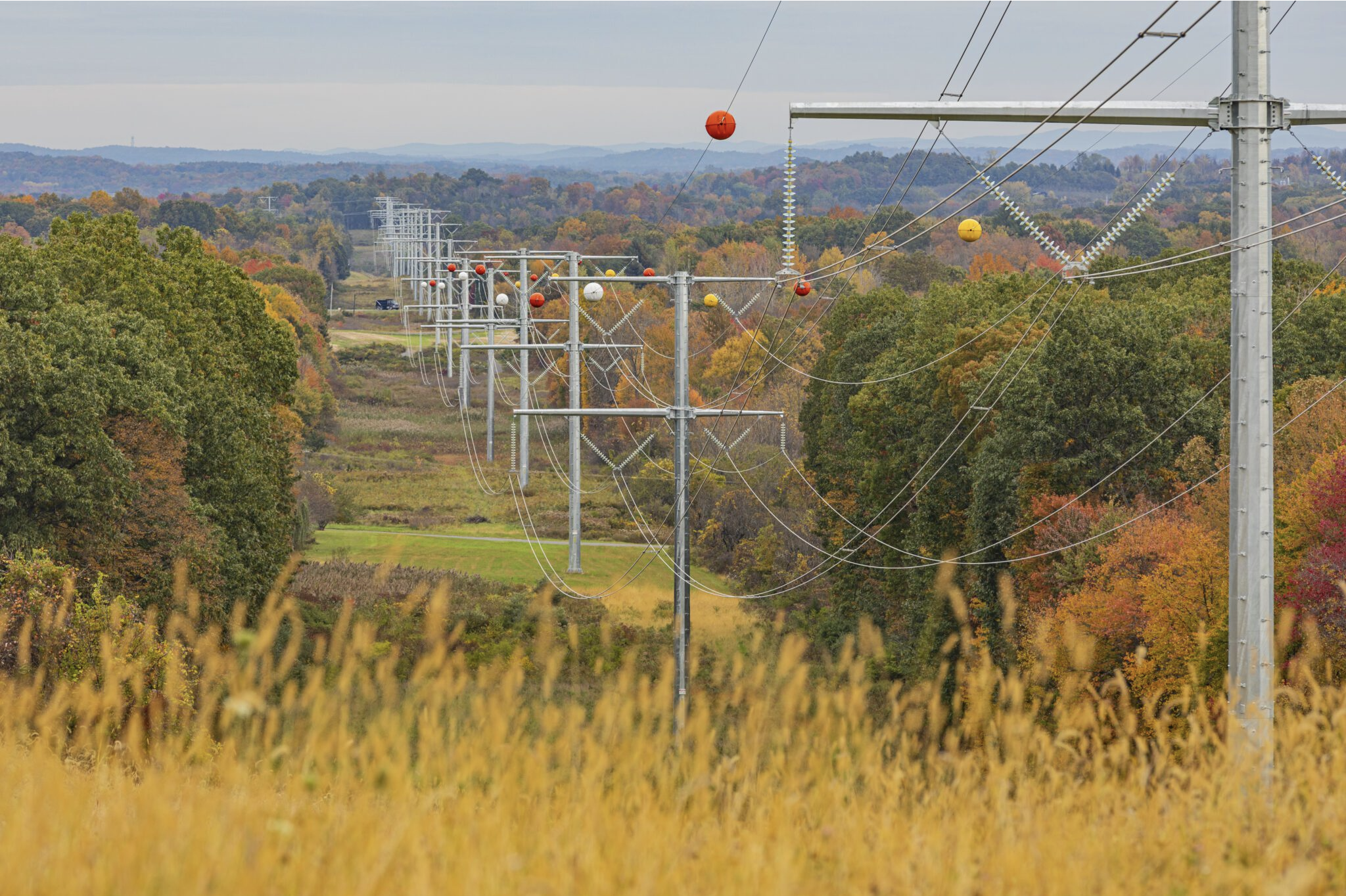
Contributed by Burns & McDonnell team - www.renewableenergyworld.com
An aging and congested transmission system has hindered New York’s transition to renewable energy, restricting the efficient delivery of clean power from upstate wind and solar installations to downstate consumers, while delaying the state’s ambitious goal of achieving 50% renewable energy by 2030.
The New York Energy Solution project, owned by New York Transco, a transmission infrastructure developer based in New York focused on enhancing bulk power facilities across the state, would need to alleviate these challenges by upgrading the transmission infrastructure.
Regulatory approvals would require the new transmission lines to maintain heights similar to the existing lines to minimize visual and environmental impact. Another significant challenge would be maintaining grid reliability throughout construction, which would necessitate a highly coordinated outage plan to keep multiple 115-kV transmission lines energized while infrastructure upgrades were underway. Any disruptions could affect critical substations and end users, making precise scheduling and execution essential.
Aligning with the priorities and technical standards of four different transmission owners, each with distinct operational constraints and regulatory requirements, would call for continuous coordination and engagement. Further complicating execution, lingering effects of the COVID-19 pandemic would disrupt the supply chain and affect material availability, necessitating proactive management to keep the project on schedule.
To overcome these obstacles, the project required meticulous planning, innovative engineering solutions and seamless coordination among stakeholders.
The solution
To strengthen New York’s transmission infrastructure while minimizing environmental and community impact, New York Transco selected Burns & McDonnell to provide engineer-procure-construct (EPC) services for the 55-mile transmission upgrade within the existing right-of-way.
The project involved replacing the existing double-circuit 115-kV transmission line with a new double-circuit 345-kV/115-kV line, increasing grid capacity and improving reliability. The upgrade also included the development of the new Knickerbocker Switching Station, a 345-kV facility engineered to route high-voltage electricity more efficiently. Additionally, the Churchtown Switching Station was rebuilt and modernized as a 115-kV facility, enhancing system resilience and operational flexibility.
At the Pleasant Valley Substation, which houses both 345-kV and 115-kV facilities, upgrades accommodated increased power flow and integrated the new transmission lines into the grid. To further enhance system efficiency and stability, the project included construction of the Van Wagner Capacitor Bank Station, a 345-kV facility to support voltage regulation and improve power quality.
To meet permitting requirements and address community concerns, the project team designed the new double-circuit 345-kV/115-kV transmission line to similar heights of the existing 115-kV infrastructure. Maintaining grid reliability during construction remained a top priority. The team developed a detailed outage plan to keep multiple 115-kV transmission lines energized throughout the process. Careful sequencing of activities kept power flowing to critical substations, preventing service disruptions.
Burns & McDonnell aligned vested parties, maintaining project efficiency while meeting technical and regulatory requirements. Despite industrywide supply chain disruptions, the team took a proactive approach to procurement. Strategic planning and vendor partnerships secured key components on time, keeping the project within budget and schedule.
Beyond these facility upgrades, the project included replacing 2.2 miles of 115-kV transmission line and reconductoring a 0.8-mile double-circuit 345-kV transmission line to optimize performance and reduce bottlenecks. These enhancements strengthened New York’s bulk power system, supporting the state’s renewable energy goals while improving grid reliability.
The results
The New York Energy Solution project has reinforced the state’s transmission infrastructure and enabled additional integration of renewable energy.
Key achievements for this project include:
- 1.2 million work hours without a lost time incident, demonstrating a strong safety culture.
- Enhanced grid efficiency through reduced congestion, allowing more renewable energy to flow from upstate to downstate New York.
- Support of state efforts to reduce carbon emissions.
- Energized six months ahead of schedule.
- Beyond technical improvements, the project created jobs, boosted local economies and reduced reliance on fossil fuels. By facilitating the delivery of renewable energy, this project played a critical role in lowering greenhouse gas emissions and helps position New York as a leader in sustainable energy infrastructure.
The New York Energy Solution project serves as a model for large-scale transmission modernization, demonstrating how advanced engineering, strategic execution and collaboration can deliver safe, effective and efficient clean energy solutions.
By overcoming significant engineering, regulatory and logistical challenges, this project sets a new national standard for transmission infrastructure upgrades, paving the way for a more resilient, efficient and renewable-powered grid.
Source
The religious roots of climate-conscious investing

About five years ago, environmental, social and governance (ESG) investing was all the rage. It’s a strategy that considers how issues like climate change might affect investments in the future. But long before ESG was a concept adopted by Wall Street, there were smaller investors weighing environmental and social issues: Religious investors.
Sister Pat Daly, a Dominican nun from Caldwell, New Jersey, was a trailblazer among faith-based investors. Daly died in 2022, but for decades she was the executive director of the Tri-State Coalition for Responsible Investment, a group of religious orders that leveraged their collective shareholder power to push companies to make social and environmental changes. “We were not at all welcome,” Daly said in 2014, when accepting an award for her work in sustainable investing. “They did not like these nuns and priests and rabbis and ministers showing up at these annual meetings.”
But over time, she became friends with some of the very people she butted heads with in the boardroom. “Sister Pat would show up to deaths and births and marriages…of companies that she fought for 20 or 30 years,” said Tracey Rembert with the Interfaith Center on Corporate Responsibility, a coalition of faith-based and other socially-conscious investors. Today its members collectively own or manage more than $4 trillion in assets.
“She just went head to head with so many powerful CEOs,” Rembert said “You were literally in an auditorium and looking at a David and Goliath scene, where it is one person up at a microphone talking to huge sources of power in the United States, and saying, ‘This isn't good enough.’”.
Daly led the charge on pushing companies to act on climate change. She pressed huge corporations like GE, Ford and Exxon Mobil to take steps to address their environmental impact. In a 2016 interview, Daly credited the decades of work from faith-based investors for laying the groundwork for ESG investing. “I think the legacy is that we really have started the ESG movement,” she said. “We've set it in play, and it's taking off.”
By the early 2000s, Wall Street started caring about these issues, too, for a very different reason: The bottom line.
This is an excerpt from the latest season of How We Survive. Listen to the full episode here.
Fueling Change: The Multiple Impacts of Increasing Liquefied Petroleum Gas Usage in Rural India
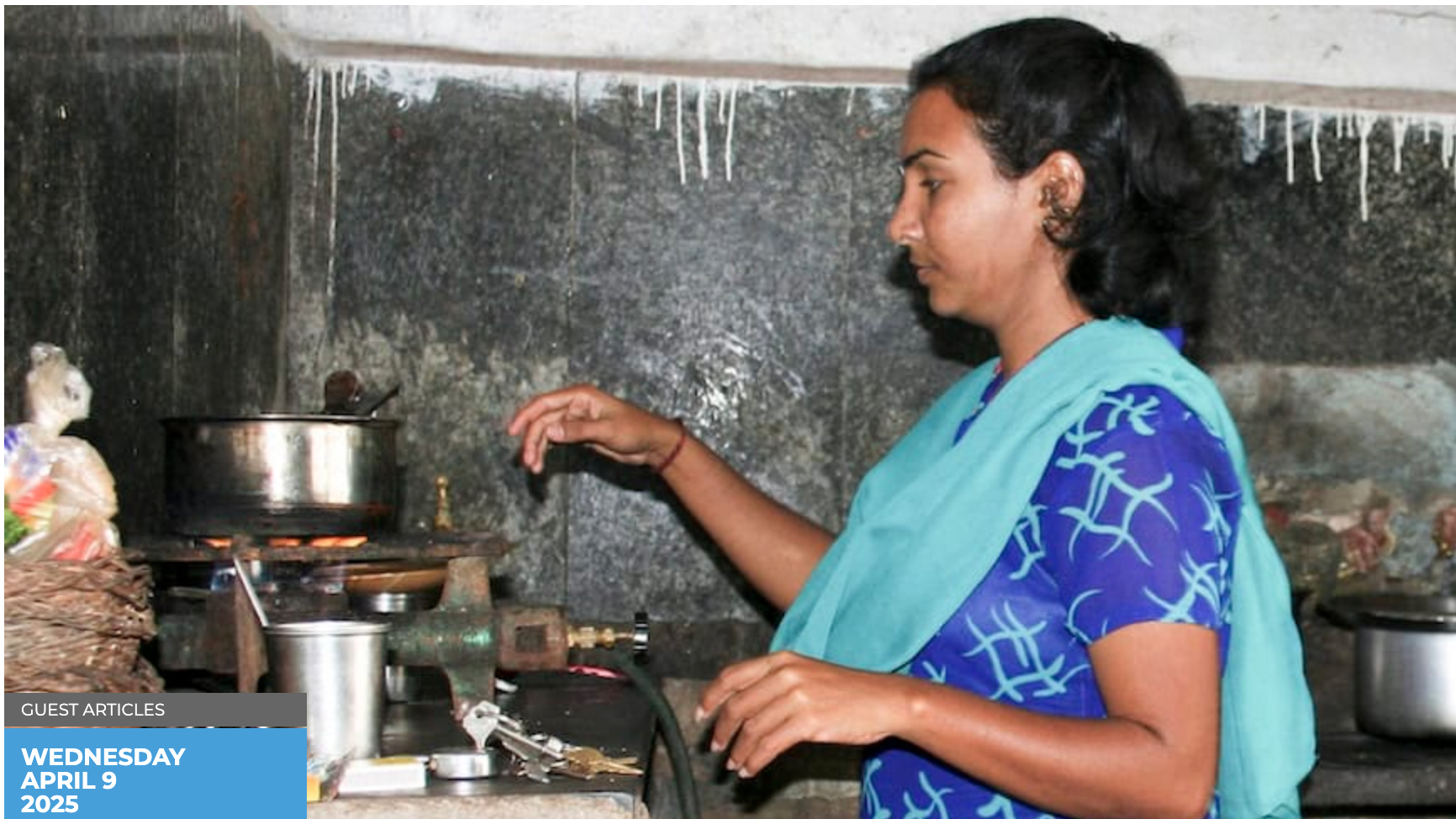
Amid the serene locale of Balaghat — a small city in Madhya Pradesh, India — lives Sunita, a 45-year-old homemaker. Like many local residents, she used to cook food over a chulha, a traditional earthen stove fueled by firewood, coal and dung cakes. The crackling flames were her constant companion, but they brought more than warmth to her kitchen. Acquiring fuel for the fire was an ongoing burden for the household, and a steady stream of smoke and searing heat accompanied the flames, which left Sunita coughing and her eyes stinging — a harsh reality that extended to her children, too.
Then, in 2018, a glimmer of hope emerged in the form of free access to a clean gas cookstove and a refillable cylinder of liquefied petroleum gas (LPG) under the Indian government’s Pradhan Mantri Ujjwala Yojana (PMUY) program. With LPG, Sunita initially found respite from the smoke-filled haze, while reclaiming precious time for herself and her family. However, these improvements were short-lived, as the logistical challenges of LPG refills soon became apparent, adding both financial strain and inconvenience to her household.
Firstly, the program only provided the initial LPG cylinder free of charge, and the increasing cost of LPG refills added to the financial burden for her husband, who works as a smallholder farmer — especially during non-business seasons. Secondly, her village was located 25 km from the gas agency — outside of the catchment area where it made frequent deliveries — which led to delays of more than five days in receiving delivery of refilled cylinders. When this happened, Sunita had to rely on her husband to visit the agency for a refill, which took up almost half his day. As a result, their household was unable to obtain regular LPG refills and relied mostly on the biomass fuel they had used prior to the program.
The barriers to LPG adoption among rural households in India
As MSC has explored the barriers that hinder LPG cylinders’ adoption among individuals like Sunita, we’ve gained insights into the intricate challenges of rural households. MSC’s extensive research has unearthed three key factors that impede the regular refilling of LPG among rural communities:
- Accessibility challenges: The remoteness of rural areas poses logistical hurdles, which makes direct home deliveries impractical for LPG distributors without incentives. As a result, customers must retrieve cylinders from agencies, incurring extra costs, spending valuable time and facing considerable inconvenience.
- Financial challenges: The irregular income patterns prevalent in rural settings make it difficult for households to afford the recurring expense of LPG. This is particularly the case for those engaged in agriculture and wage labor. This financial instability often compels a shift toward cheaper biomass or solid fuels as substitutes.
- Cultural conditioning: Deep-rooted cultural and taste preferences for cooking over traditional chulhas contribute to the resistance to LPG adoption. Many households perceive biomass as abundant and cost-free, which undermines the perceived desirability of switching to LPG. Moreover, a prevalent lack of awareness of safety practices around LPG further reinforces the reluctance among rural customers.
MSC has tackled these challenges in LPG access through a program, facilitated by Bharat Petroleum Corporation Limited, that leverages the hundreds of thousands of self-help groups (SHGs) in operation across Madhya Pradesh, which reach 4 million rural households. A Self-Help Group is a village-based group of 10-20 individuals (women in this case) who contribute small regular savings to create a fund. Members borrow from this fund when needed, and SHGs with good financial discipline are linked to banks for credit, which they then on-lend to their members. Recognizing that this extensive SHG ecosystem could help significantly boost the uptake of LPG cooking, we worked with the Madhya Pradesh State Rural Livelihood Mission and the Ministry of Petroleum and Natural Gas to develop a need-based microloan product that has enabled SHG members to afford LPG cylinders regularly.
Read full article
https://mail.tbligroup.com/emailapp/index.php/lists/cm138dw4qa9f1/unsubscribe
